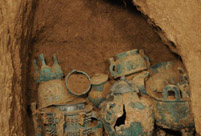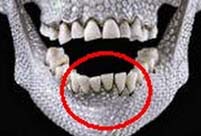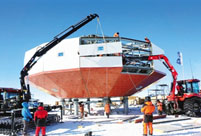 Deng Xiaoping: 'I have a clear conscience all my life'
Deng Xiaoping: 'I have a clear conscience all my life'
 Xi Jinping: 'The people are our strength'
Xi Jinping: 'The people are our strength'
 Amazing cliff diving in cold winter
Amazing cliff diving in cold winter
 Enjoy Sochi 2014 in slow motion
Enjoy Sochi 2014 in slow motion
 University student sentenced to death for poisoning roommate
University student sentenced to death for poisoning roommate
 Chinese lunar New Year celebrated in San Francisco
Chinese lunar New Year celebrated in San Francisco
 Taiwan Lantern Festival 2014
Taiwan Lantern Festival 2014
 Haiyang Yangge: make up
Haiyang Yangge: make up
 China's top 10 richest cities
China's top 10 richest cities
BEIJING, Feb. 26 -- The State Oceanic Administration (SOA) on Tuesday hailed achievements by Chinese scientists onboard an oceanic research vessel surveying polymetallic deposits in the southwest Indian Ocean as "beyond anticipation."
The "Dayang-1" vessel arrived at the ocean's polymetallic sulfide exploration contract area on Jan. 26 and left on Feb. 19.
Scientists onboard the vessel discovered two seafloor hydrothermal areas and four hydrothermal anomaly areas, and deepened understanding about the overall area.
They also gained insight on the origins of of carbonate hydrothermal areas, and made successful attempts to explore for sulfide, said the SOA.
Hydrothermal sulfide is a kind of sea-bed deposit containing copper, zinc and precious metals such as gold and silver. Those metals formed sulfides after chemical reactions and came to rest in the seabed in "chimney vents."
Dayang-1 gathered three carbonate pieces and a "chimney vent," the first time Chinese scientists have collected such a structure from the southwest Indian Ocean.
The team also secured many other samples, and two people designated by the International Seabed Authority were trained during the expedition.
 Chinese Dream: the Chinese Spirit and the Chinese Way
Chinese Dream: the Chinese Spirit and the Chinese Way 51 bronze sacrificial utensils unearthed in Shaanxi
51 bronze sacrificial utensils unearthed in Shaanxi Most gorgeous female celebs in Chi-pao
Most gorgeous female celebs in Chi-pao Second round of test kicks off at Beijing Film Academy
Second round of test kicks off at Beijing Film Academy Ancient Qiang people had vertically grown teeth
Ancient Qiang people had vertically grown teeth Top 10 Chinese youth’s favorite seaside destinations
Top 10 Chinese youth’s favorite seaside destinations Traditional Tibetan clothing tailors
Traditional Tibetan clothing tailors In photos: Unveiling Taishan station
In photos: Unveiling Taishan station Beautiful moments of family reunion
Beautiful moments of family reunion Chinese warplanes C919 to appear at Singapore Airshow
Chinese warplanes C919 to appear at Singapore Airshow Ruins of Shang Dynasty's structure unearthed in Shaanxi
Ruins of Shang Dynasty's structure unearthed in Shaanxi  Intercity high speed train in operation
Intercity high speed train in operation Severe coldness freezes large parts of China
Severe coldness freezes large parts of China  Beautiful moments of Sochi
Beautiful moments of Sochi  It's not just performing this year
It's not just performing this yearDay|Week|Month